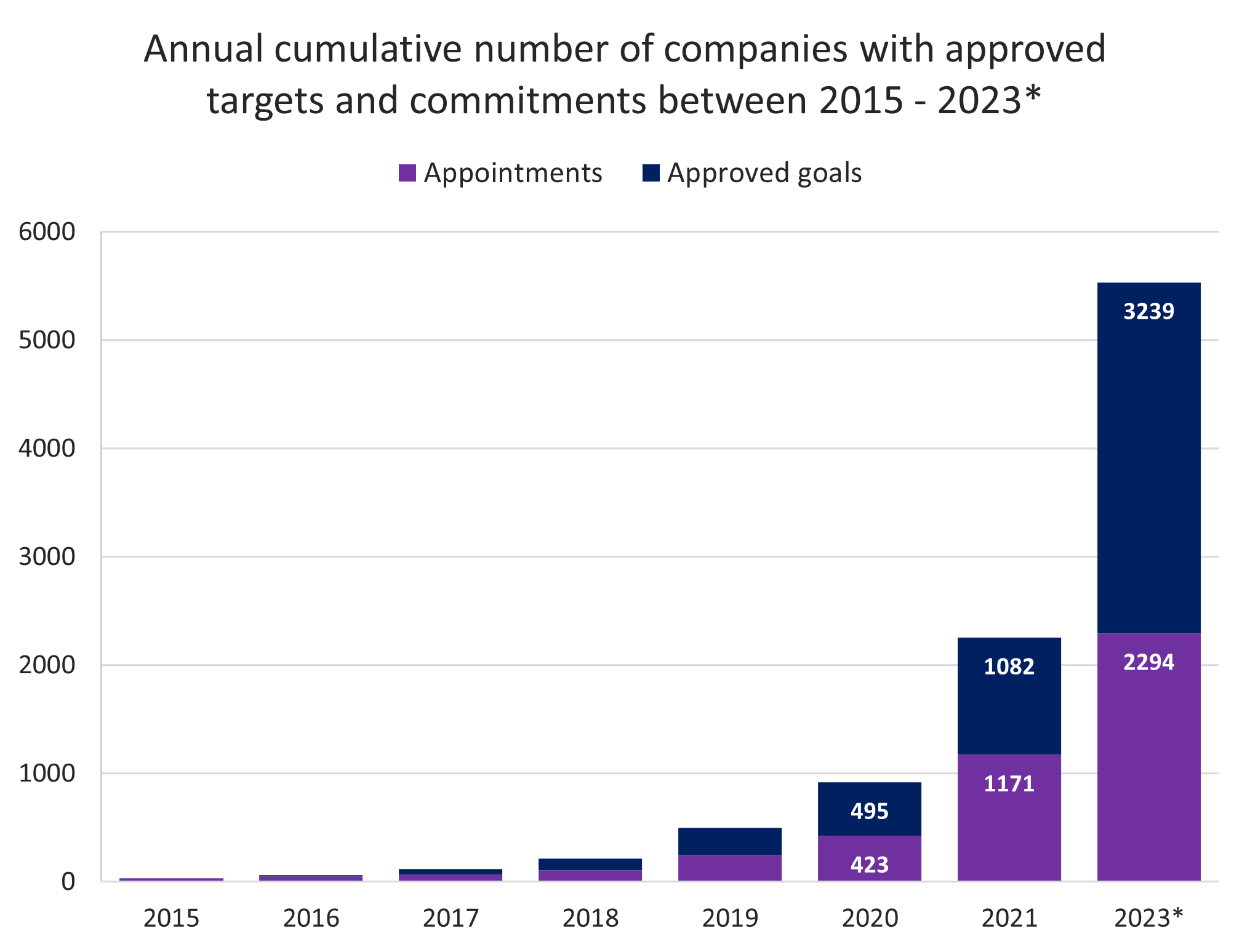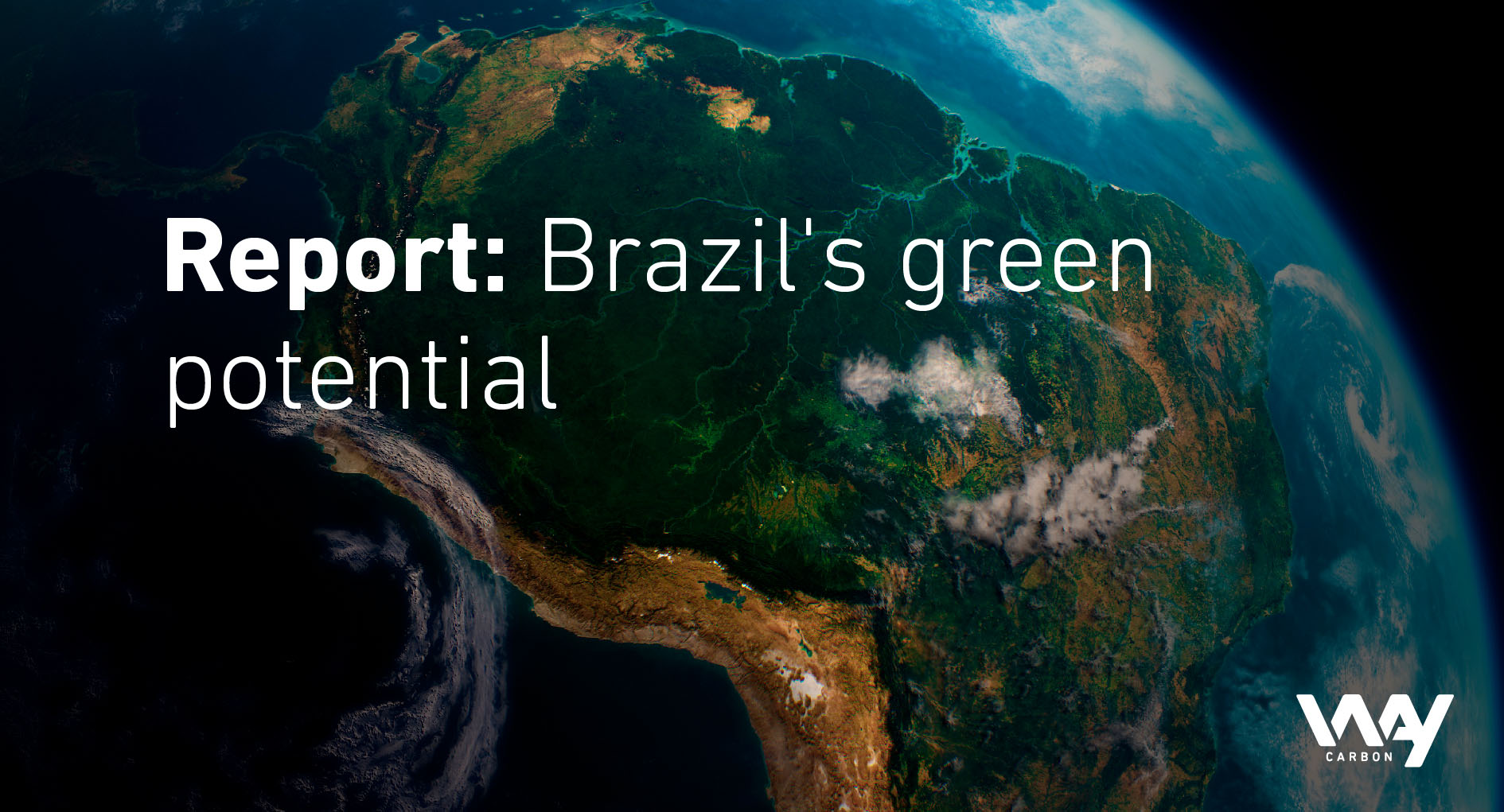Report assesses Brazil’s potential for nature-based solutions
The number of companies making science-based climate commitments is on the rise. Over 5,000 companies worldwide have made climate commitments in 2023, and more than half of these have targets approved by the SBTi, according to the initiative’s targets dashboard. To achieve net zero-aligned goals, companies must take significant action to reduce greenhouse gas (GHG) emissions, such as shifting their energy matrix from fossil fuels to one based on renewable sources.
In addition, investment in carbon projects developed from nature-based solutions (NbS) can be part of companies’ climate strategy.
In addition, investment in carbon projects developed through Nature-Based Solutions (NbS) can be part of companies’ climate strategy. “One third of the climate commitments can be achieved with the support of NbS. We’re talking about initiatives such as forest and mangrove restoration, for example,” explains Isabela Aroeira, Market Intelligence Manager at WayCarbon. This analysis is part of the report “Unlocking Brazil’s Green Potential: A Comprehensive Market Analysis and Business Opportunities on Nature-Based Solutions,” developed by WayCarbon experts and launched this month.

Source: SBTi
How to effectively use nature-based solutions in the decarbonization strategy?
Henrique Pereira, WayCarbon’s Director of Consulting, emphasises that investing in NbS shouldn’t be a one-off effort for an organization. “Movements such as Net Zero are leading companies to understand the need to focus on emissions reduction and become less reliant on credits generated by projects. With our report in hand, the market will have access to this type of insight and will be able to assess how to invest in solutions with a synergistic role within a broader decarbonization strategy,” says Pereira.
What is Brazil’s real potential in nature-based solutions ?
In this scenario, the world sees Brazil as a major supplier of NbS. However, the executive warns that it’s important to go beyond assessing this leadership to gain clarity on what is practically feasible. “We need to understand the theoretical potential, what makes sense technically and economically, and what potential an individual company can offer to the market. Hence the importance of the report,” concludes Pereira. WayCarbon estimates that Brazil could provide nearly 1.5 billion tonnes of carbon per year in GHG reductions or removals of emissions through restoration, avoided deforestation, regenerative agriculture and blue carbon projects. However, according to Henrique, “around 47% of this total represents opportunities that can be realiszed, as there are barriers such as technical, land use and economic constraints, among others,” he explains.
What methodology was used in the report?
WayCarbon developed a unique methodology to calculate the market size for NbS projects, drawing on public information, literature, and 17 years of internal experience. By analysing the intersection of NbS and carbon credit markets, the study identifies key business opportunities for companies looking to invest in these solutions in Brazil. Click on the link for a free sample of the report and to find out how to purchase the full version.
Glossary of terms
NbS: Nature-based solutions (NbS) harness the power of natural systems and processes to address environmental, social, and economic challenges, while promoting biodiversity conservation and improving human well-being.
Blue Carbon: Solutions that focus on protecting and restoring coastal ecosystems such as mangroves. They can provide a cost-effective approach to reducing greenhouse gas emissions and building resilience to the impacts of climate change.
SBTi: The Science Based Targets Initiative provides companies with a clearly defined pathway to reduce emissions in line with the goals of the Paris Agreement (limiting warming to 1.5°C). More than 4,000 companies around the world have now joined the initiative.
Net Zero: According to SBTi, to achieve net zero, companies must significantly reduce emissions and offset the impacts of any remaining emissions. This includes reducing Scope 1, 2, and 3 emissions to zero or to a residual level consistent with achieving global net zero emissions*, and permanently neutralising any residual emissions in the target year and any GHG emissions released thereafter. To contribute to this global effort, companies are strongly encouraged to go beyond their science-based reduction targets to mitigate emissions beyond their value chains.
*Or reducing to a sectoral level, following eligible 1.5°C trajectories.

 EN
EN  ES
ES PT
PT



